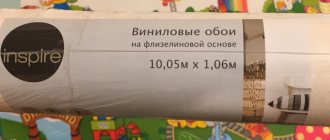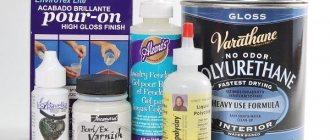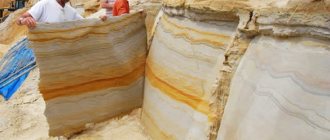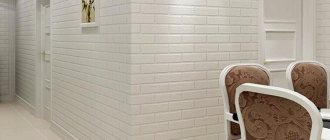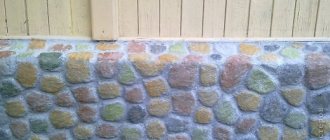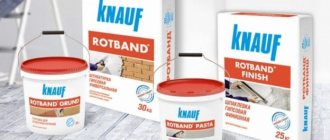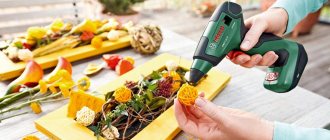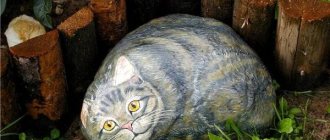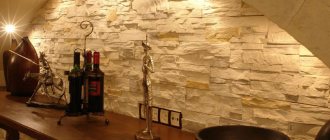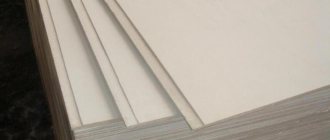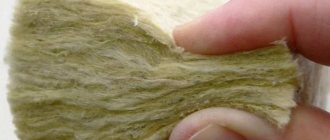Artificial stone is the general name for industrially produced products that imitate natural stone. These include:
- Synthetic material based on stone chips, polyester resins (quartz agglomerate is more often considered as a decorative material)
- Artificial acrylic, the main component of which, accordingly, is acrylic resins.
- Compositions of painted concrete that imitate a natural stone surface. Sometimes the name “liquid marble” is used for such material. As a rule, this artificial stone is not used for interior decoration, so we will not dwell on it in detail.
What is artificial stone
Artificial stone is an imitation of natural rock in polished or unprocessed form. Made from crushed natural minerals with the addition of polyester or acrylic resins. At home, they are often poured from colored binder mixtures.
Manufacturing methods:
- bulk method;
- vibration casting;
- vibration pressing.
Artificial stone slabs and other materials are used to line the walls and lay the sidewalk. Allowed to be used as countertops, window sills, and plumbing fixtures. The production technology even allows us to make sculptures.
To view description and recommendations for use:
Gypsum based
Since time immemorial, people have used gypsum to produce various products. It is light and easy to use, and products made from it are relatively light in weight.
Characteristics:
- Eco-friendly.
- K is a relatively good heat insulator.
- Inexpensive price.
- Easy to replace or carry out repair work.
- Various imitation stone surfaces.
Main types of stone
By application, there are products for interior and exterior use, as well as decorative items. Types of artificial rock are distinguished by the type of mineral filler.
Crumbs and/or powder are used from natural materials:
- limestone;
- granite;
- marble;
- sandstone;
- slate;
- basalt;
- tuff;
- purple;
- soapstone;
- other stones.
Types of artificial rock are also distinguished by their binding components. Imitation stones are made from epoxy resin, polyester mixture, cement, gypsum, sand.
Cement based
Manufactured by casting. The imitation is made from a mixture of cement and sand (3:1). The process does not use natural stone at all. Naturalness is given by the relief of the shape and the correct selection of coloring substances.
For the strength of the concrete material add:
- reinforcing mesh or fiber;
- plasticizer;
- water repellents.
The resulting products are heavy. Therefore, during the manufacturing process, a mesh is drawn on the back side. This improves the adhesion of the slab to the mortar and the working surface. They also buy glue for installing concrete structures.
Video on how to make a coating:
Gypsum based
They are made by casting in the same way as cement products. But for imitation, an aqueous solution of gypsum powder is used. There are ready-made gypsum mixtures on the market for the production of artificial stone with improved physical and mechanical properties.
Moisture resistance is increased by adding:
- asbestos;
- white cement;
- fine-grained sand.
Slaked lime is added to prevent mold. When mixing the solution, emulsion or acrylic paint is included in the composition. But this is not necessary: finished tiles can be painted after installation.
To view the production of stone imitating slate:
Acrylic
Acrylic (liquid) stone is a completely synthetic material. It contains only a polymer type of resin (made from methacrylic/acrylic acid ester).
For reference: finished products made from acrylic polymers are safe and do not cause allergies. The material is used to make plastics, plexiglass, bathtubs, stone sinks, sealants, and yarn for clothing.
Acrylic solution for solution:
- remains transparent after hardening (unless pigment is added);
- compatible with acrylic dyes;
- best suited for imitation marble;
- More often used for casting products with complex, non-standard shapes.
Resin is also used to create mineral agglomerates (products from chips of natural stones glued together with acrylic). It does not hide the color and pattern of natural rocks and adds shine to the surface.
See tips about stone from the master:
Quartz or polyester
This is a mineral composite or agglomerate made by vibration pressing. The solution for artificial stone is made from quartz sand (at least 90%), polyester resin (5–9%) and paint (1%).
Polyester glue contains petroleum products, and often styrene. The latter substance is toxic during work with the product and in the event of melting/burning of the product. When making artificial stones at home, it is recommended to replace polyester with epoxy or acrylic resin.
All work with epoxy and polyester resin is performed using gloves, safety glasses and high-quality respirators.
Under high loads, polyester stones are inferior in strength to acrylic imitation. They also have a lower threshold for heat resistance and moisture permeability.
Watch the story about the stone:
Flexible
Flexible stone is produced in rolls and sheets with a thickness of 1 mm to 6 mm. The artificial product is also called stone wallpaper and soft tiles.
Three-layer flexible material:
- below lies fiberglass, fabric or other support;
- the base is lubricated with bitumen or glue, which retains elasticity after drying;
- The top layer is decorative - stone chips are poured onto the glue, pressed with a press and allowed to dry.
Flexible stones are used to decorate curved or round work surfaces. Also suitable for cladding external/internal walls.
To view a review of the stone:
Imitation stonework
Stonework is imitated directly on the work surface. For external work, a cement-sand mortar is used. Any plasters can be used indoors.
Features:
- the mixture is prepared according to the instructions;
- a plaster network is stuffed onto the working surface;
- spread the mixed solution over the mesh with a spatula (thickness at least 2 cm);
- the solution on the wall is evenly smoothed with a rule or spatula;
- a plastic stamp imitating masonry is dipped in water (every time) and pressed against the mortar on the wall;
- After the unpainted solution has dried, the wall is painted and then coated with a water-repellent agent.
If there is no stamp, the solution is thrown onto the wall in slides of different shapes and sizes. Then grooves are drawn between them. When the surface is dry, the artificial stones are painted one color and the spaces in gray, simulating cement.
Decorating walls with decorative bricks: preparatory stage
Before you begin laying decorative stone, you must first prepare the wall surface. It must be not only strong, but also smooth, so that there are no problems with gluing the facing products. The permissible deviation in this case is 1 mm per 1 m of wall. Masters advise adhering to this rule regardless of the type of finishing material.
Before installing decorative stone, the wall surface must be thoroughly cleaned of unnecessary materials.
Before you start finishing the walls with decorative bricks, you need to remove all old facing materials from them. These include the following: wallpaper, paint and plaster. To remove them, you can use a regular spatula. This tool is especially helpful when removing old wallpaper and paint.
Let's look at what tools and materials are needed to lay decorative bricks:
- glue;
- a reservoir in which the adhesive solution will be located;
- spatula for applying glue to the wall;
- crosses for seams;
- building level;
- grout mixture;
- hydrophobic composition and a tool for applying it (for example, a roller).
After acquiring all the necessary tools and materials, you should plaster the walls. It is important to remember that in this case it may be necessary to install a reinforcing mesh, which will strengthen the base for the decorative tiles. However, such a measure is necessary only when the weight of the artificial stone is too large. To lay thin decorative tiles under stone, there is no need for reinforcement. But in any case, you will have to eliminate wall defects.
If the surface has fairly visible defects and irregularities, then using plaster you can easily eliminate them
You will need to apply a primer to the wall surface. This will strengthen the surface and enhance the adhesion effect of the facing tiles to it. Experts advise choosing a special primer for plaster.
Preparing the glue and applying the sketch to the wall
This type of stone requires the use of a special adhesive composition. To prepare such a building mixture, you will need to use ready-made powder and mix it in a certain amount of water. As a rule, along with the glue there are detailed instructions containing not only the proportions of the components, but also the time required for its production. In turn, laying decorative stone for exterior decoration is best done using cement mortar.
To install decorative non-natural stone, you can also use liquid nails. This mixture is able to provide the necessary adhesion to the wall. Some craftsmen even use cement mortar for indoor work. However, before applying it to the wall, PVA glue is first added to it.
You can immediately buy a ready-made adhesive solution, which is diluted with water to the required consistency.
Before you start laying decorative tiles with your own hands, you need to sketch a sketch on paper. It must take into account the area of the part of the wall allocated for brick, as well as the following nuances: the presence or absence of a seam and the number of artificial stones. The best option is to transfer the sketch directly to the wall. Thus, the possibility of errors when laying this facing material is practically eliminated.
Advantages and disadvantages of the material
The quality and safety of artificial stone is at a high level. But still the material is inferior to natural minerals.
Advantages and disadvantages of materials for artificial stones:
| View | pros | Minuses |
| Acrylic | Can be repaired, does not absorb water and dirt, is wear-resistant, does not burn | Traces remain from a hot object, damaged by a knife |
| Quartz | Resistant to household chemicals, hot objects, mechanical damage | Heavy, more expensive than natural quartz, no possibility of repair or hiding joints |
| Cement | Durable, fireproof, resistant to moisture, frost and mold, washable with household chemicals, repairable | Heavy |
| Plaster | Lightweight, insulates heat, sound, repairable | Attracts moisture, molding is possible, the solution sets quickly |
| Flexible | Mounted on the surface of any structure, vapor permeable, easy to install, easily hidden seams, repairable | Expensive |
All materials allow you to make a thing of any shape and size. In some cases, it is impossible to separate the disadvantages from the advantages.
Adhesives do not impair the environmental friendliness and beauty of artificial stones, but also hide the natural mineral with a film. As a result, the texture of the rock is not felt, but resistance to damage is improved.
Introduction
Natural materials - wood, clay and, of course, stone - have firmly established themselves in home decoration long before the concept of interior design appeared. And if earlier the choice was determined by such material qualities as strength and durability, now visual characteristics are on a par with them.
Decorating walls and floors with decorative stone
A wide choice of colors, textures and formats makes decorative stone one of the most popular materials in interior and exterior decoration. The floor, walls or figured masonry of the fireplace made of natural and artificial stone add a touch of luxury to the room, emphasizing the style and individuality of the interior of an apartment or private house.
To determine which type of stone is right for you, you need to understand the range and qualities of a particular material. So what kind of stone is used in interior decoration?
Where is artificial stone used?
The main requirements for products are safety for health, aesthetic appearance, ease of care, durability, and similarity to natural minerals.
Walls inside residential premises are lined with cement, gypsum and flexible materials, and fireplace areas are distinguished. Products in rolls are pasted over imitation natural boulders, columns or balls and other decorative figures.
Stones for gardens, sidewalks and façade or wall decoration in damp rooms are additionally treated with hydrophobic agents.
Acrylic material is suitable for washbasins and bathtubs with non-standard sink shapes. Tabletops, window sills, decorative statues, and shelves are also made from it.
Quartz and epoxy solutions are suitable for creating elements of stairs, bar counters, and small-sized furniture. The material is also used for the production of sewer manholes.
Watch the story about how to make landscape design in the garden:
Which to choose
When choosing a facing material, you must first take into account the overall style of the room. You need to follow some recommendations:
- for rooms in dark shades, it is better to use finishes in light colors;
- facing materials of blue, gray or green colors should not be present more than 2/3 of the wall height , otherwise the space will visually appear smaller and the furnishings will become heavy;
- the transition between finishes of different colors should be smooth and neat;
- Clients are provided with stones with different corrugations . Lightly ribbed materials are suitable for any design. With strong corrugation they require proximity to modest decorative elements.
Directly when purchasing, you need to pay attention to the availability of certificates, the absence of which may mean low quality products. If the purchase is not made online, then you need to carefully examine the cut, where the structure of the material will be visible. It is recommended to choose a material with small elements; large ones will catch the eye. The frost resistance index should be taken into account; the higher it is, the longer the service life. Other recommendations are presented in the following video.
Manufacturing of artificial stone
They are made in factories using automatic equipment. During the work, vacuum, high temperature, and dryers are used.
For home production buy:
- Silicone forms;
- wax or other means that facilitates the separation of the mold from the finished product;
- vibrating table;
- sieve;
- mixers;
- containers for solutions;
- knives or equipment for cutting parts;
- grinding tools;
- drying rack.
For personal protection, buy a respirator and gloves. You need running water, soap or a special product to wash the polymer from the skin.
Components for artificial stone:
- mineral filler (stone chips, powder) or sand + cement, gypsum;
- acrylic or epoxy resin;
- a set of dyes (powder or liquid);
- heat gun.
First, mix the dry ingredients. Make a liquid solution by adding water or resin or dye. The mold is lubricated with a separating agent, and the finished liquid is poured. Vibration removes air from the solution. Leave to harden, then dry without form.
Watch a story about industrial production:
Installation
Laying stone by specialists per square meter is carried out at a low price, but performing work over a large area will cost a pretty penny. Therefore, it is possible to consider the option of self-installation, the sequence of actions of which is as follows:
Preparation, according to many experts, is an important step. It is necessary to clean the working surface (the base for finishing) from previous coatings, dust, dirt, debris, and level it. If there is a possibility of fungus formation, prevention is needed. Prepare the necessary tools : pliers, a grinder and sandpaper, a construction mixer, a level, brushes for cleaning seams, spatulas and a brush, a rag, a bucket, a grinder or a hacksaw for trimming. A primer must be applied to the base and reverse side of the facing material. Mark the surface.
Reference. It is recommended to lay out the proposed stone composition on the floor and number the elements, which will facilitate installation. If necessary, adjust products to size.
Important! Work should be carried out at a room temperature of +5 to +30 degrees. At higher temperatures, twenty minutes before starting installation, it is necessary to moisten the base and the back of the stone with water.
Laying is carried out in accordance with certain rules:
- the adhesive solution is prepared for 15-30 minutes of work, later it hardens;
- a notched trowel is used to apply the glue;
- installation should begin from the corner, from bottom to top;
- glue is applied to the back side of the stone:
- the stone is pressed against the wall for a few seconds to ensure secure fixation;
- the width of the seam should not exceed 8 mm, the indicator is directly proportional to the size of the product;
- the seams are sealed with putty, the color of which can be changed by painting.
Customer Reviews
The products are beautiful, but still contain polymers. Service life depends on operating and maintenance conditions. It is better to place items made of agglomerate in the kitchen: they are much stronger, but cannot be restored. Installation specialists stipulate the ease of working with the material. The cost often exceeds the price of natural stones.
The many areas of application of artificial stone, combined with an affordable price, have made it popular among buyers. The material can be made independently at home or purchased ready-made.
What can you say about artificial stone? Comment, share your experience, distribute the article on social networks among your friends. Best wishes.
Slate
In the 13th century it was known as a finishing material. Has a relief surface. For a long time it was used as a finishing material for building facades and landscape designs.
Now it is a popular decorative stone for interior decoration.
Characteristics:
- Easy to process.
- Strong and durable.
- Good sound and heat insulation.
- Eco-friendly.
FAQ
Tabletops made of liquid stone. These products are the cheapest (one and a half times more expensive than plastic. 3-4 times cheaper than acrylic composite). Thanks to manufacturing technology, repairs are possible. You can get rid of small scratches yourself using polish. To remove chips, specialists are required to spray a new layer of composition. The repair is not reflected in the picture, as it is located quite deep.
What is the recommended thickness? The thickness of the acrylic composite is 12 mm, the agglomerate is 20 or 30 mm. The thickness of the tabletop or window sill itself can be any thanks to the gluing on MDF. A strip of stone of the required width is glued to the end. The product looks monolithic.
Which brands are considered budget and which are premium? The most expensive products are from American brands, the cheapest are from Chinese brands. Korean ones are located in the middle. If you need a tabletop with a simple shape, it is best to choose an agglomerate from one of the leading manufacturers.
What to do if scratches appear on the countertop? If there are a lot of scratches, you can sand the acrylic tabletop yourself using a fine abrasive compound, then use a polishing paste.
The size of the scratches is first determined on the agglomerate. If they are small, polishing is enough. With a depth of up to 2 mm and a small width, the surface is cleaned with a cloth soaked in alcohol. You need to go over the scratch with a marker of the appropriate color, and after removing the excess, fill it with transparent glue. At a depth of more than 2 mm, the glue is mixed with paint (10x1). If the damage is deeper, specialist help is required.
Technologies, production
In acrylic composite production, resins are mixed with additives, and the resulting mass is poured into molds. The thickness of the acrylic slab is 12 mm. The thickness of the finished product depends on the installation location: kitchen countertops are made with a thickness of 20 mm. This is achieved by gluing an acrylic sheet onto an MDF panel. A strip of stone runs along the end. The joint is invisible to the naked eye. Dimensions 3650x760 mm. Sizes may vary depending on brand. Acrylic thickness 12 mm. Sold by linear meters (acrylic in one linear meter is 920x760 mm).
To process acrylic stone, you can use equipment that is available in many woodworking shops - milling and grinding machines, circular saws. In this case, the power tool must be suitable for working under heavy duty conditions, and the cutter teeth and cutting discs must be made of carbide materials. There are also specialized devices for making countertops from acrylic stone.
Before starting work, you should check that the sheets of material do not differ in color. It is advisable to use sheets of the same series. It is necessary to carefully study the drawing and draw up a cutting plan, taking into account 3 mm tolerances for the final fit of the product. The cutting must be done so that the seams are perpendicular or parallel to the edge of the sheet. The joints are reinforced by gluing strips of material 5-10 cm wide from below.
Before gluing the sheets, you should check what the joint looks like from the outside. For gluing, two sheets are placed at a distance of several millimeters from each other, the seam is filled with glue, the sheets are adjusted to each other and secured with clamps, without tightening too much. To make the seam stronger, a strip of the same material 5-10 cm wide is glued from below along the entire length of the seam. For gluing, a special glue is used, selected for the given color of the stone according to the correspondence table.
The next stage is making the edge. A groove is made on the tabletop, an edge is inserted into it and glued. I use cutters of different shapes and get a beautiful decorative edge with a variety of profiles.
The base for the tabletop is made from moisture-resistant wood boards or moisture-resistant wood plywood. It is glued to the acrylic surface with an adhesive composition that remains elastic after hardening.
Acrylic stone can be thermoformed, making it possible to make countertops with curved shapes and rounded corners. The cut piece of stone is heated to 150-175 °C. When it becomes flexible, give it the desired shape and fix it until it cools. The heating time of the stone is determined using special tables.
Processing of artificial stone is completed by grinding and polishing. Before starting work, thoroughly wipe the surface with a cloth soaked in soapy water. Grinding is performed by sequentially moving from rougher to smoother.
